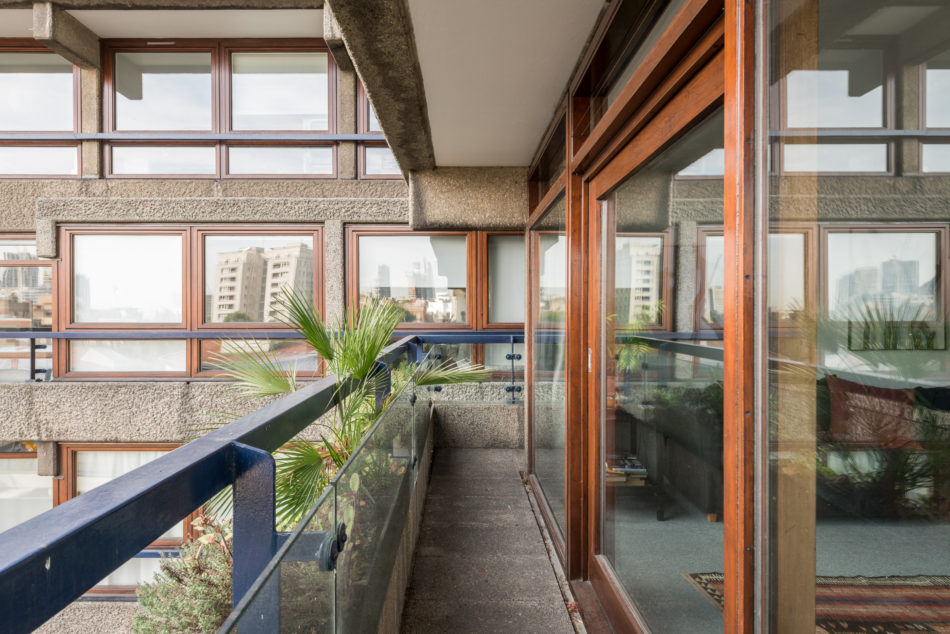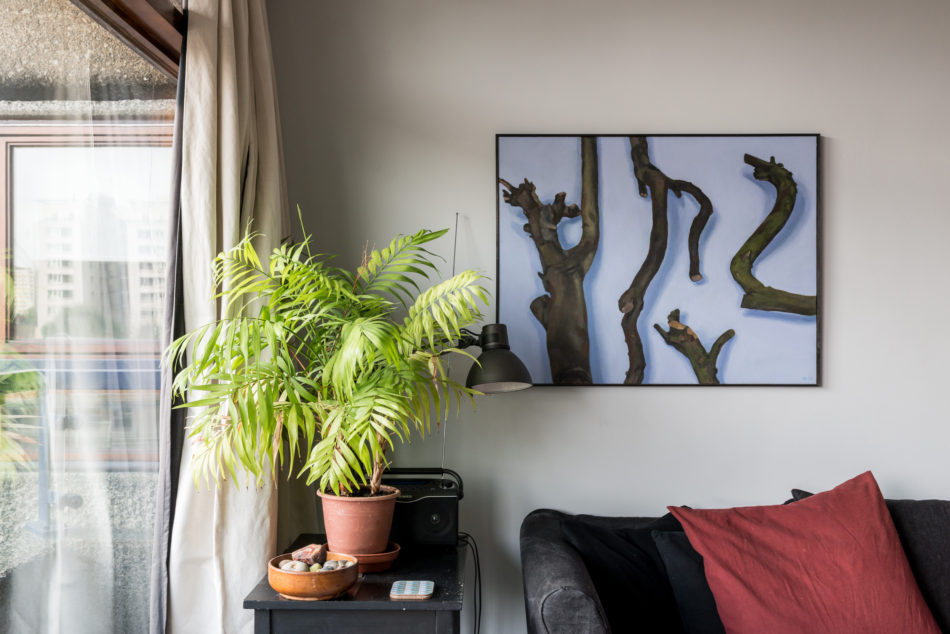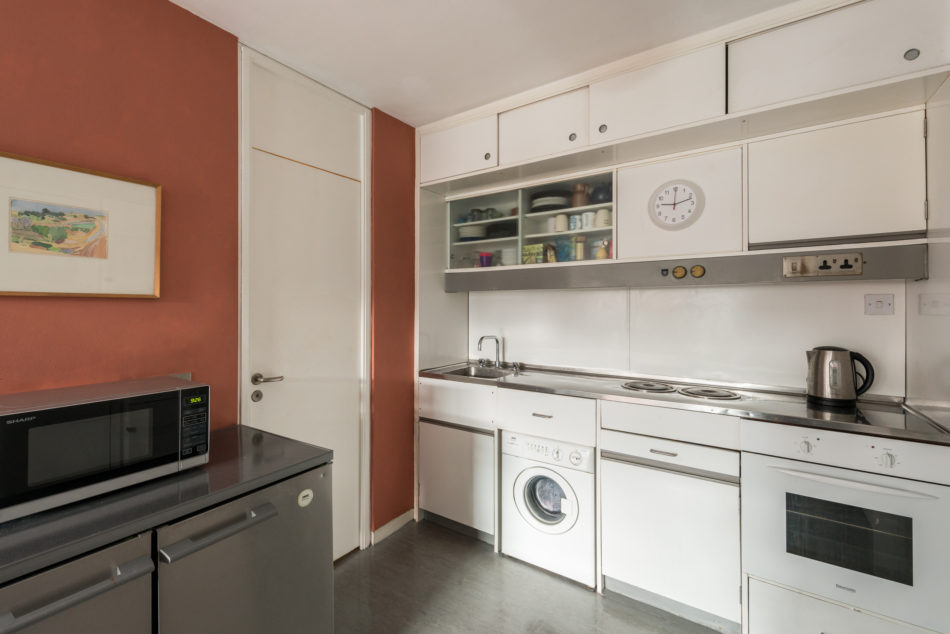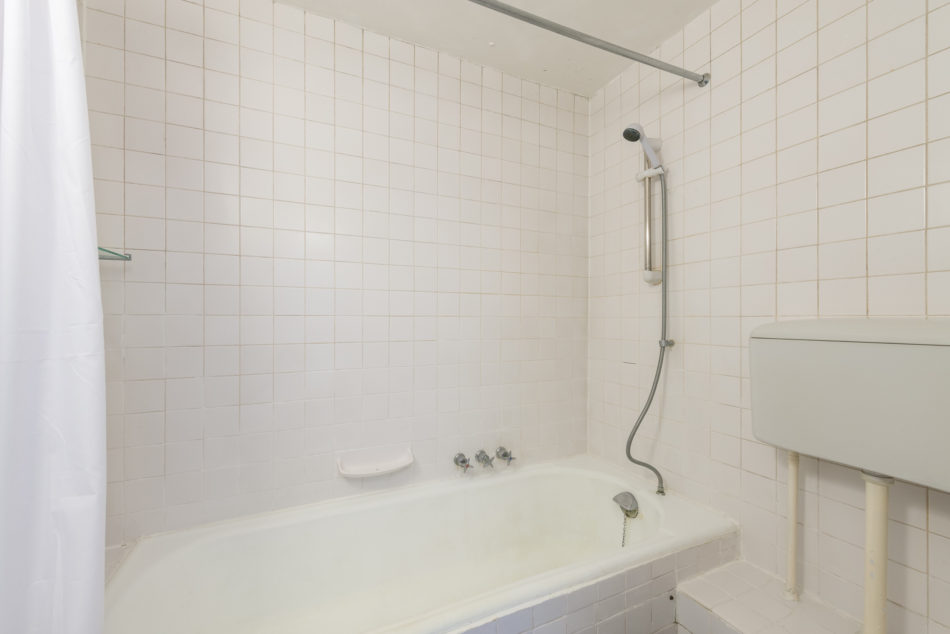




















Breton House
Barbican, London EC2
Architect: Chamberlin, Powell & Bon
Register for similar homesOffered for sale with many of its original features intact, this highly sought-after Type F2A studio apartment is peacefully located on the third floor of the Barbican’s Breton House.
The large east-facing apartment is naturally subdivided into a versatile living space, with an original Brook Marine kitchen, dining, seating and bedroom area. The triple-width floor-to-ceiling windows create a spectacular sense of light and space and incorporate a sliding door that opens onto a long balcony positioned to catch the morning sun.
The bathroom is accessed via a short hall containing a useful storage cupboard. There are also large built-in cupboards in the main room, which are currently used as wardrobes.
There is residents’ parking in the underground car park, where there is a concierge.
The Barbican Estate is the finest achievement of the architects Chamberlin, Powell & Bon. It was Grade II-listed in 2001 in recognition of its extraordinary contribution to London’s urban landscape. All residents have access to communal gardens throughout the development. Breton House is a terrace block on the northern boundary of the estate. Flats either face east (and overlook Whitecross Street) or west (and overlook the beautiful Cripplegate Free Library building and Golden Lane).
The Underground stations of Barbican (Hammersmith & City, Circle and Metropolitan Lines) and Moorgate (Northern, Hammersmith & City, Circle and Metropolitan Lines) are both within easy reach. Moorgate also offers National Rail services. The flat is well positioned for access to the Barbican Arts Centre, Smithfield Market, and the bars and restaurants of Clerkenwell. There is a Waitrose supermarket on Whitecross Street, around a four-minute walk, and One New Change is just a short walk away, with cafés, restaurants and flagship fashion stores.
Tenure: Leasehold
Lease: 125 years from 1981 (approximately 89 years remaining)
Service Charge: approx. £2,091
Residents’ Parking: approx. £10 / day (or reduced yearly rate)
Please note that all areas, measurements and distances given in these particulars are approximate and rounded. The text, photographs and floor plans are for general guidance only. The Modern House has not tested any services, appliances or specific fittings — prospective purchasers are advised to inspect the property themselves. All fixtures, fittings and furniture not specifically itemised within these particulars are deemed removable by the vendor.




History
In 1951 the City of London organised a competition for architects to submit plans for a scheme to replace buildings destroyed by a night of bombing in December 1940. The proposal was to be called the Golden Lane Estate. Peter Chamberlin, Geoffry Powell and Christoph Bon all submitted plans vowing that if one of their practices were to win they would all form a partnership and work together on the project. Powell won the competition, and so Chamberlin Powell & Bon was formed in 1952.After their success with the Golden Lane Estate, the firm were asked to design the Barbican Estate.
Between 1954 and 1968 they drew up four distinct schemes which they continued to modify even after the build started in 1965. Their intention was to create a residential precinct which would allow people to live “both conveniently and with pleasure”. Their mission would include a quiet pedestrian space which would be “uninterrupted by road traffic” and where people would be able to “move about freely enjoying constantly changing perspectives of terraces, lawns, trees and flowers” and seeing “the new buildings reflected in the ornamental lake.” Their vision came to life in the Barbican Estate.
Apartments have individual balconies which overlook verdant landscaped squares and a lake with fountains. The buildings are isolated from the hubbub of the city and accessed by a pedestrian walkway raised above street level. The residential towers are three of London’s tallest. Designing buildings of this height required close collaboration with engineers especially Ove Arup, who were themselves newly founded in 1946, and were increasingly collaborating on complex projects with avant-garde practitioners of the built world. The towers gave a “dramatic contrast to the otherwise horizontal treatment of the buildings” and have become an iconic part of London’s skyline.
In September 2001, Tessa Blackstone, Minister for the Arts, announced that the Barbican Estate was to be Grade II listed for its special architectural and historical interest. The complex represents a utopian ideal for inner-city living, with its integrated schools, shops, restaurants, theatres and cinemas. It is also one of the most extensive examples of the Brutalist style associated with the honest and raw use of materials.
Queen Elizabeth, after declaring the Barbican open to the public on its completion in 1982 described it as “one of the modern wonders of the world”.
























